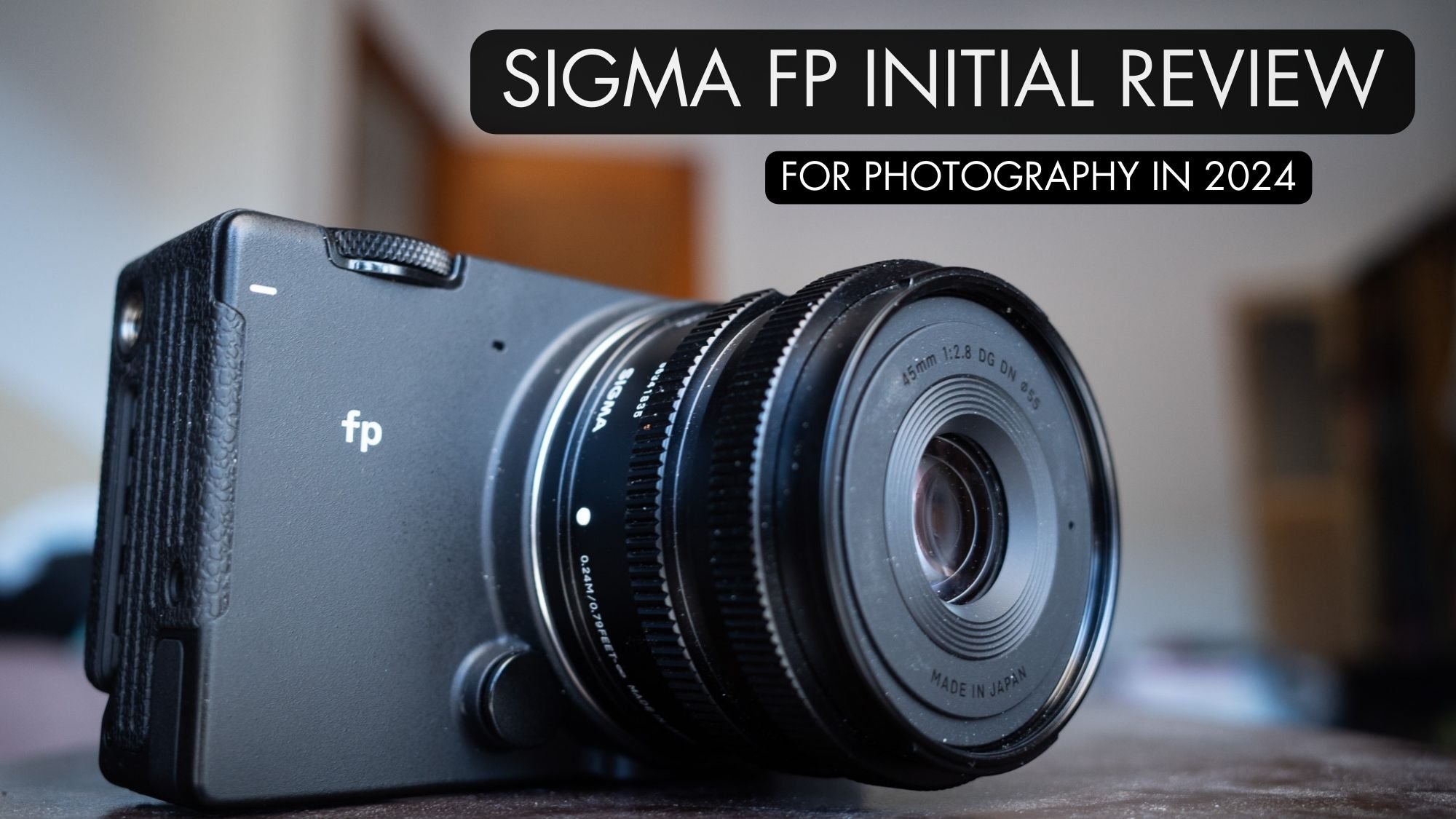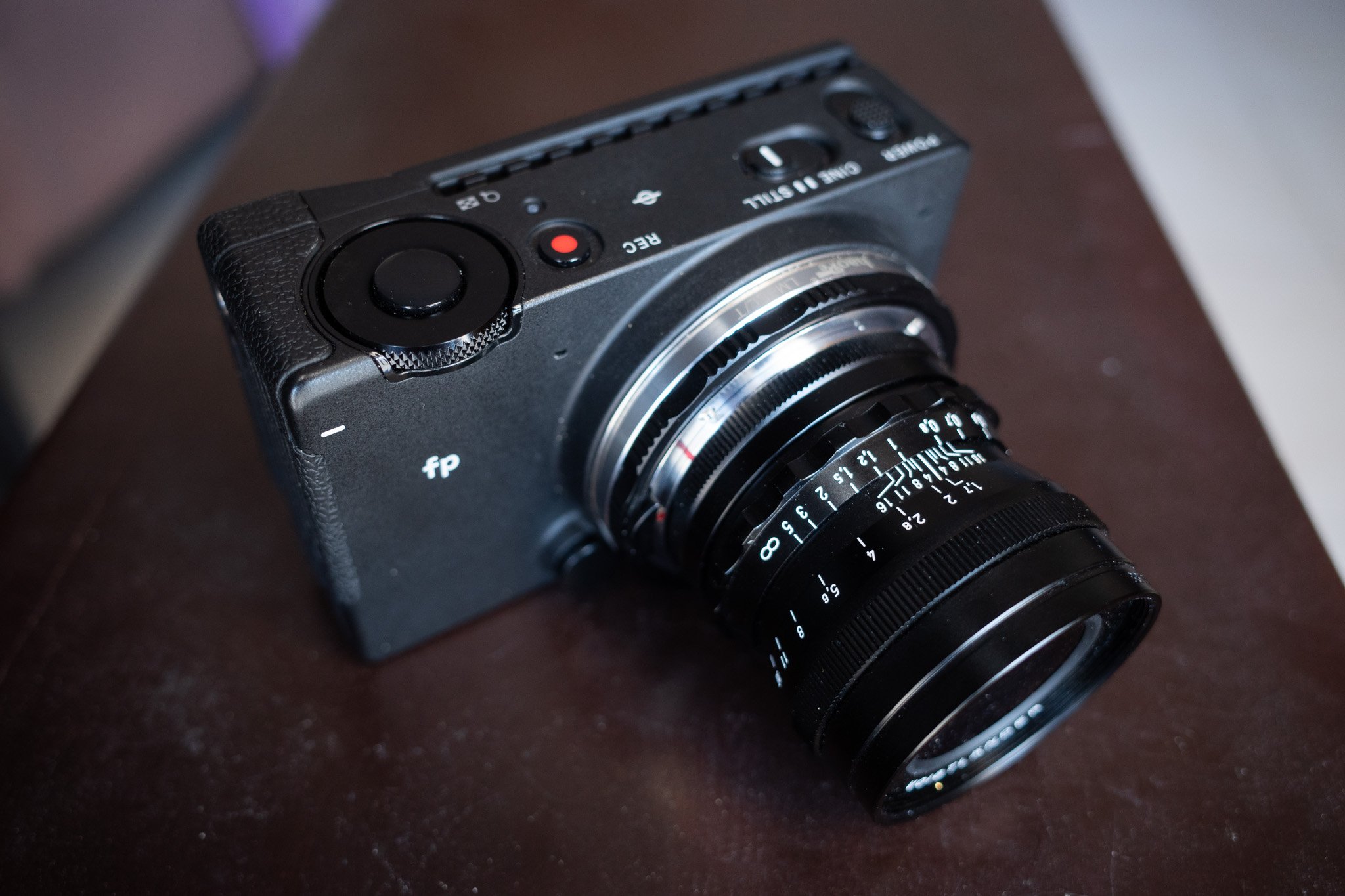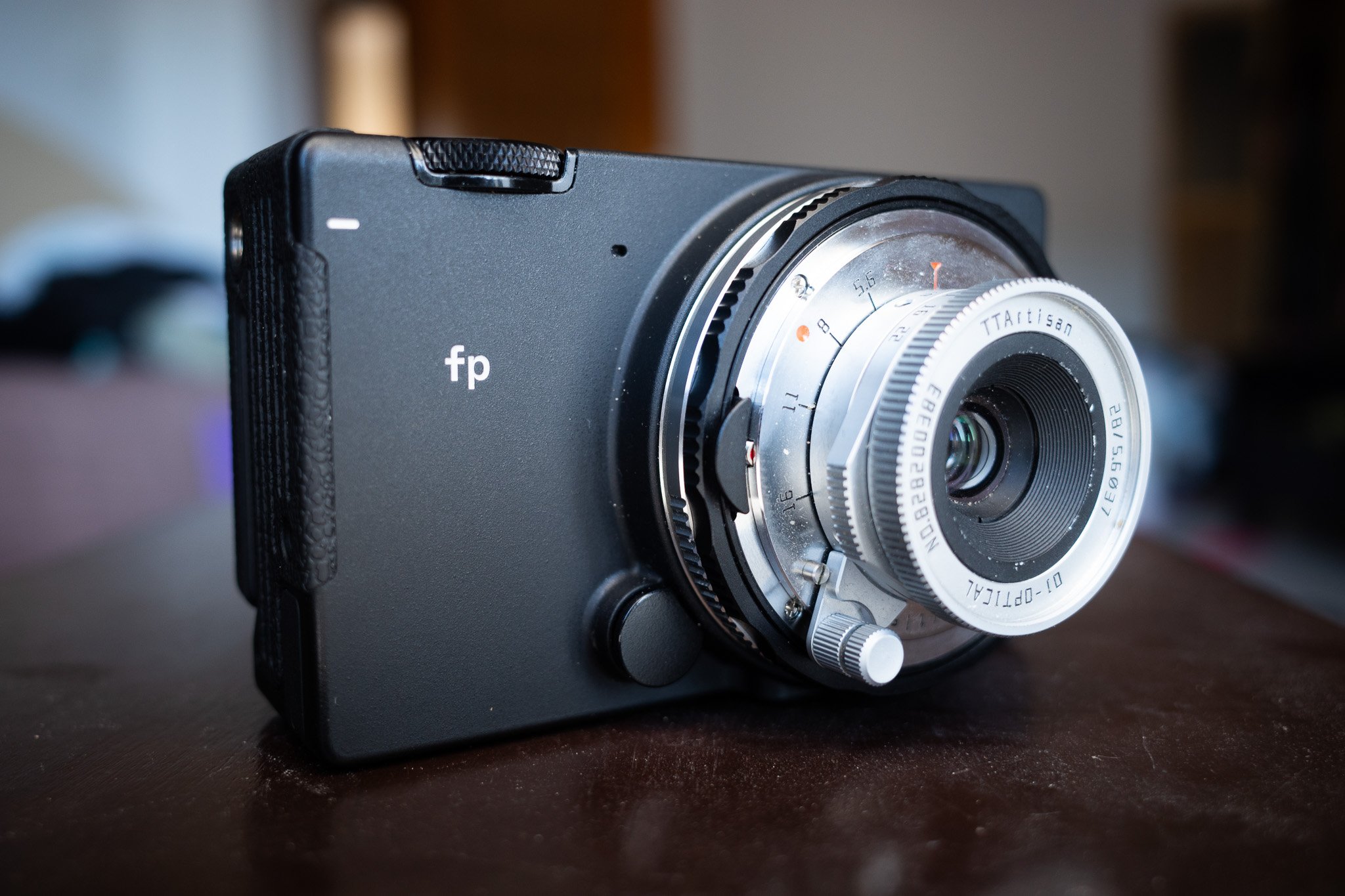Sigma FP Review: Worth Buying in 2023 and 2024?
Initial Review of the Sigma FP for Photography
Introduction
Sigma has carved a unique space in the photography world, renowned for its high-quality lenses and innovative approach. The Sigma FP camera is a prime example, packing a full-frame sensor into a body that's smaller and lighter than many APS-C models. But is it just a novelty, or a serious contender for photographers of all levels? Let's dive into the Sigma FP review and find out.
This is my initial review of the camera after using it for approximately 3 weeks. This camera is not a review unit. I purchased the FP with my own money. I own the camera and all tested lenses outright and I have no professional relationship with Sigma at the time of writing this article. I think you’ll find this review in contrast with many others on the internet, which were written by individuals who only “tested” the camera for a short period of time for the sake of writing an article or making a YouTube video. I intend to use the FP for the foreseeable future, and I will write a full review when I’ve had time to test the camera fully.
Why I bought the Camera
When it comes to buying cameras, size is very high on my priority list. I’ve owned many cameras over the years, and I’ve found that a large camera, no matter how capable, will spend more time on my shelf than a small camera with half its capabilities. My most used cameras are my Ricoh GR III and my Olympus e-m1 mark ii. The Sigma FP is currently the smallest full-frame interchangeable lens camera on the market, so naturally it caught my eye.
I purchased the FP primarily for stills photography. After photographing with my Ricoh for over a year, I became interested in purchasing something that would allow me to change focal lengths while still being compact. I suspected the Sigma FP had a lot of untapped photographic capability that has been overlooked by reviewers.
I was also very interested in trying Sigma’s color modes. Similar to Fujifilm’s film simulations, the color modes allow the user to apply a custom look to JPEG files. Sigma’s history with color science led me to believe the color modes weren’t getting the attention they deserved (more on color modes later).
First Impressions: Small But Mighty
From the moment you pick up the Sigma FP, you're struck by its size. It's incredibly compact, making it a joy to carry around. It is a lightweight camera compared to competitors, but I think most first-time users will be slightly shocked by just how dense the camera feels when they first pick it up. The magnesium alloy body feels sturdy and well-built, despite its diminutive stature. The minimalist design is clean and functional, with just the essential buttons and dials. The body has a very industrial yet luxurious feel.
It’s perfectly designed to match the aesthetics of Sigma’s lenses. The black metallic lens bodies match seamlessly with the body of the FP. I paired mine with the Sigma 45mm f/2.8. It’s a step up from most kit lenses and complements the body nicely. I’m also planning to use Leica m-mount lenses via an adapter, so I picked up the Haoge Macro Close Focus Adapter from m-mount to l-mount.
Why Not the FP L?
The Sigma FP has traditionally been seen as a videographer’s camera, while it’s sibling, the 61 megapixel Sigma FP L has been considered the photographer’s camera. So, why didn’t I buy the Sigma FP L? It all came down to price and availability. While, admittedly, I would have preferred the FP L, I had a limited amount of time to make my purchase due to international travel for work. At the time, it was much easier to find a used FP at a good price.
Ergonomics: An Expected Compromise
A common critique of the Sigma FP is the ergonomics. I determined to use the FP without a case or grip for the first few months to test the camera as designed. I can confirm that the camera is a little cumbersome to handle without accessories. I often press the AEL button unintentionally with my thumb, and the thumb protrusion on the back right corner isn’t positioned particularly well for those trying to use the camera one handed.
That said, I would hope, that those buying this camera would be aware there is always a trade off between size and ergonomics. Anyone expecting this camera to handle like a Nikon Z8, and griping about the fact that it doesn’t, apparently had unrealistic expectations from the beginning.
The ergonomics on the FP are perfectly acceptable considering what Sigma was trying to achieve with this camera.
I suspect I’ll eventually pick up a small grip for the camera to make it easier to shoot with one hand. I’ve heard good things about the Sigma HG-11.
EVF, Grip, Cage, Naked: Build it Up or Strip it Down
I like the fact that the Sigma FP gives you versatility in terms of size. If you want better ergonomics, nothing is stopping you from adding a cage, monitor, SSD rack, and other accessories.
But the Sigma FP can also be slimmed down into a pocketable go-everywhere camera. I personally tested this on a trip to Paris last week. I carried my Sigma FP and my Voigtlander 35mm f/1.7 Ultron around in my right jacket pocket all week into museums, restaurants, cafes, and metro stations. No camera bag required, and I was able to stuff it into my pocket when the rain came. The camera is small enough that it wont scream “TOURIST” to everyone around you.
Image Quality: A Full-Frame Feast
Despite its size, the Sigma FP boasts a 24MP full-frame CMOS sensor, delivering great image quality. Image quality is comparable with any of the leading brands in the full-frame arena. Photos are sharp, detailed, and bursting with color. Speaking of color, I think Sigma has some of the best straight-out-of-camera color of any of the manufacturers.
The dynamic range is impressive, although not class leading. You need to protect the highlights. I generally underexpose my photographs because there is much more versatility in the shadows. Low-light performance is very excellent, with clean images even at high ISO settings.
Electronic Shutter: Flicker and Banding
One of the biggest critiques of the Sigma FP as a photographer’s camera is the absence of a mechanical shutter. The electronic shutter can cause the camera to be susceptible to flicker or banding under artificial lighting. Almost every review of the FP mentions this issue, but is it actually a big deal?
After taking hundreds of photos with the FP, many of them indoors, I’ve not noticed banding in a single photo. That isn’t to say the problem doesn’t exist, but as someone who is more concerned with composition, color, and capturing memories, I haven’t noticed any banding that’s significant enough to ruin a photo. If you are hyper-critical about image quality, the banding issue may turn you off to this camera. But for the 90% of us who aren’t pixel-peeping every photo, I don’t think potential banding is a reason to avoid the FP and FP L.
In my future full review, I’ll provide another update.
Video Prowess: A Cine Dream
While I don’t use the Sigma FP for video much, there is no denying it has some powerful video specs. It can capture stunning 4K footage at up to 30fps, and offers true 24p cinematic frame rates. The 12-bit CinemaDNG internal recording option delivers incredible flexibility for post-processing. Videographers will also appreciate the focus peaking, zebras, and other video-specific features geared towards cinematographers.
If you are interested in shooting a lot of video, I would encourage you to pick up an external SSD, as the file sizes of the high quality codecs are sizable. I use the Crucial x9 Pro. Its very small and well rated in speed tests and durability.
Menus: Are They Really That Bad?
I’ve heard several reviews criticizing the FP menus as complex and confusing, but my experience has been the total opposite. Having come from Olympus, Ricoh, and Sony cameras, I found the menus simple and highly intuitive. I was able to find the settings I needed very quickly.
Image Stabilization: The Feature I Miss Most
I admit it… I don’t always have the best shooting technique when using my camera on the streets. I’ve gotten used to the 3-axis image stabilization in the Ricoh GR III compensating for my bad form. Switching to the FP has forced me to slow down and consider my shutter speed more often. I would love to see Sigma implement a basic IBIS system into the next iteration of the FP L. I don’t think its a feature many cinematographers would be interested in, but the FP L especially, having 61 megapixels and a being photography centric camera, would be considerable more appealing to me if the feature was added. Without a tripod or IBIS, its tough to get the full benefit of 61 MP from a sensor.
I would also appreciate a basic image stabilization system for basic video shooting. It would be great if I didn’t have to apply a stabilization effect to every handheld video during post processing.
Needed Improvement: Tilt Screen LCD Please
The Sigma FP only offers a fixed LCD screen, there is no included EVF or OVF. The lack of a dedicated viewfinder might be a deal-breaker for some. An optional electronic viewfinder is available.
If there is a mark ii of the Sigma FP and FP L, I would love to see the FP L get a tilt screen LCD. Don’t get me wrong, a fixed screen is usable (just ask the Ricoh shooters), but a tilt screen is super nice for getting creative angles and shooting from the hip. Its also useful for those of us who utilize manual focus lenses. Being able to tilt the screen helps with obtaining critical focus, especially on bright sunny days.
It is possible to add a tilt screen LCD to the Sigma FP without adding significant size. This has been proven, to some degree, by Dark Power Labs. They created an after-market modification kit that allows users to mod their FP screen to give it the tilt functionality.
The tilt LCD is my suggestion for a practical improvement, but my dream is to see a retractable EVF built into the FP L like the one found on the Sony Rx1r mark ii.
A Unique Camera: For those who like “Different”
One of the things I like most about the Sigma FP is that it’s different. The camera industry isn’t nearly as inventive as it used to be, so it’s refreshing to see Sigma taking risks and making something out of the ordinary. No other camera company is offering anything like it. It may not be a quantifiable measure, but the uniqueness of the FP is part of its appeal.
Color Modes and Film Simulations
Sigma has 15+ color modes built into the camera. These color modes are similar to Fujifilm’s film simulations. They allow the photographer to take a JPEG image with, what is essentially, a built in preset. The color modes can also be applied to videos.
I became interested in JPEG photographs when I learned about Fujifilm’s film simulations. Over the past few months, I’ve been developing custom film simulations for my Ricoh GR III (read my review here).
Sigma is not new to the color game. If you’ve followed the company, you’ll know Sigma championed the Foveon sensor for several years, which was renown for its color science.
I’ve long suspected the FP has a lot of untapped photography potential, and now it’s time to put it to the test. Over the next few weeks, I’m planning to make a series of photos using all the available color modes and share them on this website. I’ve already reviewed 2 color modes, Powder Blue and Warm Gold.
I’m hoping to use these color modes to create custom picture profiles (film simulations) for the FP series in the future.
Features and Functionality: A Learning Curve
The Sigma FP takes a different approach than most cameras and there is a learning curve attached to using it. I genuinely believe the reason the FP and FP L have not been widely embraced as photographic tools is because reviewers didn’t give them a fair chance. It takes time to get used to using this camera, but it offers real benefits when you put in the investment. I’m excited to continue using the camera and discovering more about it.
Tech Specifications
Sensor Size: Full-frame, back-illuminated, (Bayer pattern) 24 megapixel CMOS sensor
Lens Mount: Leica L-mount (full-frame)
Video: Capable of shooting CDNG RAW to an external SSD.
ISO: 100-25600
Autofocus: Contrast-Detection AF system, 49-point
Frames per second (FPS): 12 FPS continuous, 18 FPS burst
Shutter Speeds Up to 1/8000 sec & bulb mode.
Shutter Type: Fully electronic shutter (no mechanical shutter)
Image Stabilization (IBIS): No mechanical IBIS. Electronic stabilization with compatible lenses.
Viewfinder: No viewfinder in the body. Sigma sells an attachable electronic EVF called the EVF-11.
LCD Screen: Fixed, 3.15-inch, 2.1M dot touchscreen LCD
Ports and Charging: HDMI D (Micro), USB Type-C (USB 3.0). Camera can be charged via USB-C when powered off.
Storage: Single Slot, SD/SDHC/SDXC (UHS-II)
Battery: Sigma BP-51 Lithium-Ion
Dimensions: 4.43 x 2.75 x 1.78 in. (112.6 x 69.9 x 45.3 mm)
Weight: 422g (including battery and SD card), 370g (Camera Body Only)
Pros and Cons
Pros:
Unmatched size and weight: You can’t buy a smaller full-frame interchangeable lens camera.
Superb image quality: The 24MP full-frame sensor delivers sharp, detailed, and color-rich photos, great low-light performance, and excellent color science.
Color Modes: Sigma’s color mode library has some great options. I’m looking forward to testing these more.
Impressive video capabilities: Capture stunning 4K footage at up to 30fps or cinematic 24p, with flexible 12-bit CinemaDNG internal recording for advanced post-processing.
Robust build quality: Some have called it the Japanese Leica. The magnesium alloy body feels sturdy and well-built, despite the camera's compact size.
Clean and functional design: No fluff here… The minimalist layout with essential buttons and dials keeps things simple and intuitive.
Unique touch-first interface: While different from traditional cameras, the touch-sensitive LCD screen can be efficient once you get the hang of it.
Great Menu System: Clean and intuitive menus.
Unique: Hats off to Sigma for contributing something unique to the market.
Cons:
Learning curve: The camera is a bit unconventional and can be challenging for photographers accustomed to traditional mirrorless cameras.
No built-in viewfinder: The reliance on the rear LCD screen might not be ideal for all shooting scenarios. Manual focusing in bright sunlight is tough.
Expensive EVF: The optional EVF is around $700 USD. I’ll have to find one on the used market.
Initial Verdict: A Niche Gem for Discerning Photographers
The Sigma FP is not for everyone. Its unconventional design and lack of a built-in viewfinder will likely alienate some photographers. However, for those looking for a compact, high-quality full-frame camera with exceptional video capabilities, the FP is a true gem. Its image quality is superb, its video features are impressive, and its size and weight are unmatched. If you're willing to embrace its unique approach, the Sigma FP could be your next photography soulmate.



























